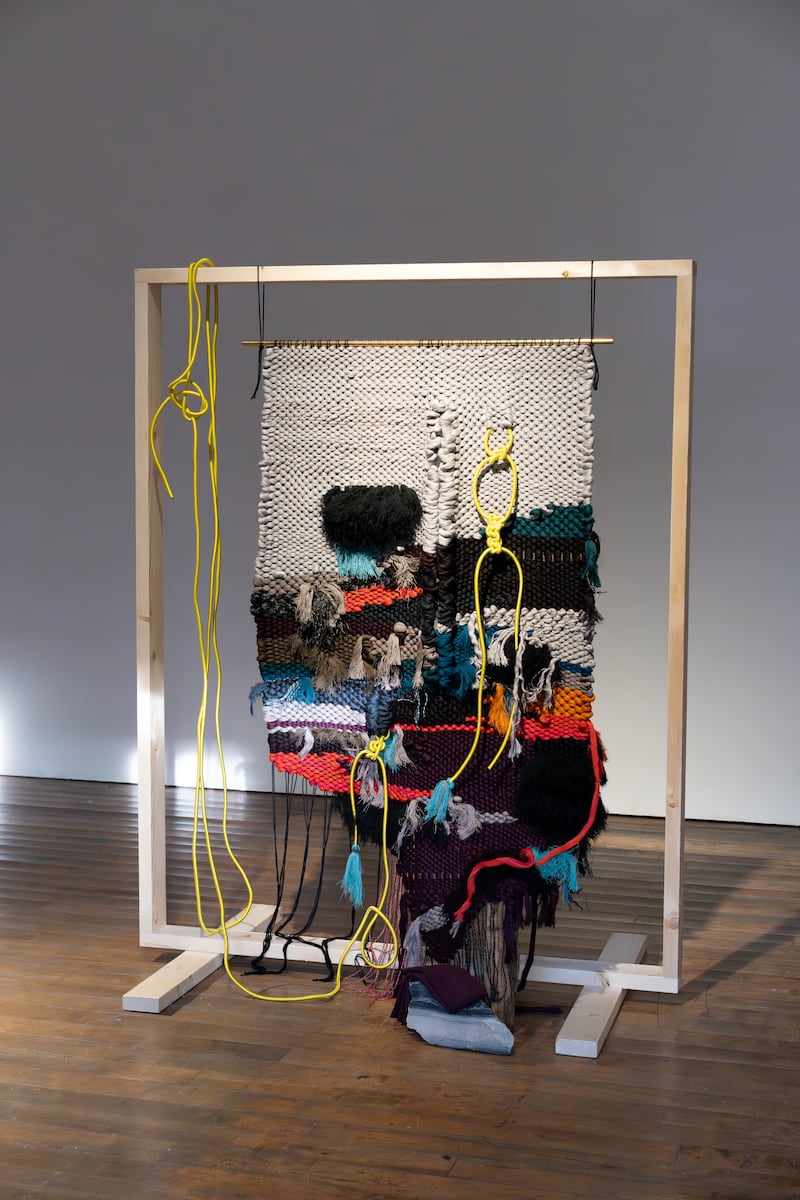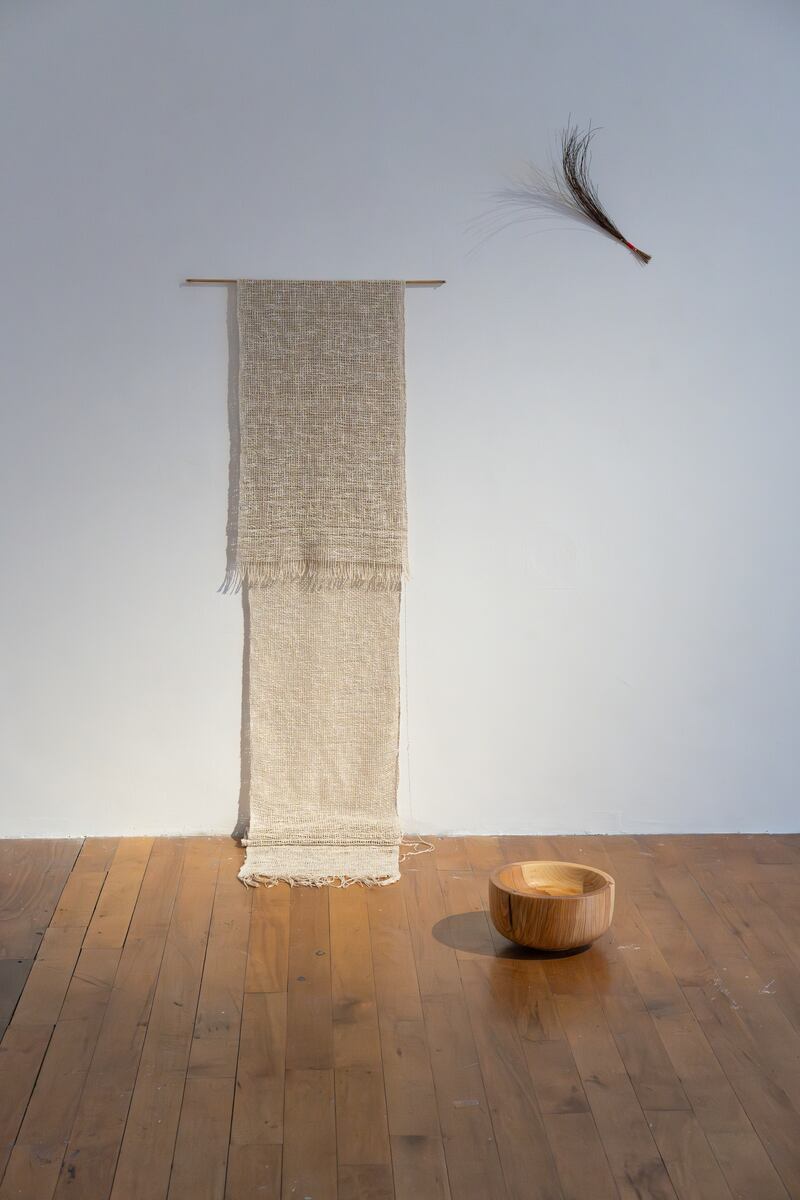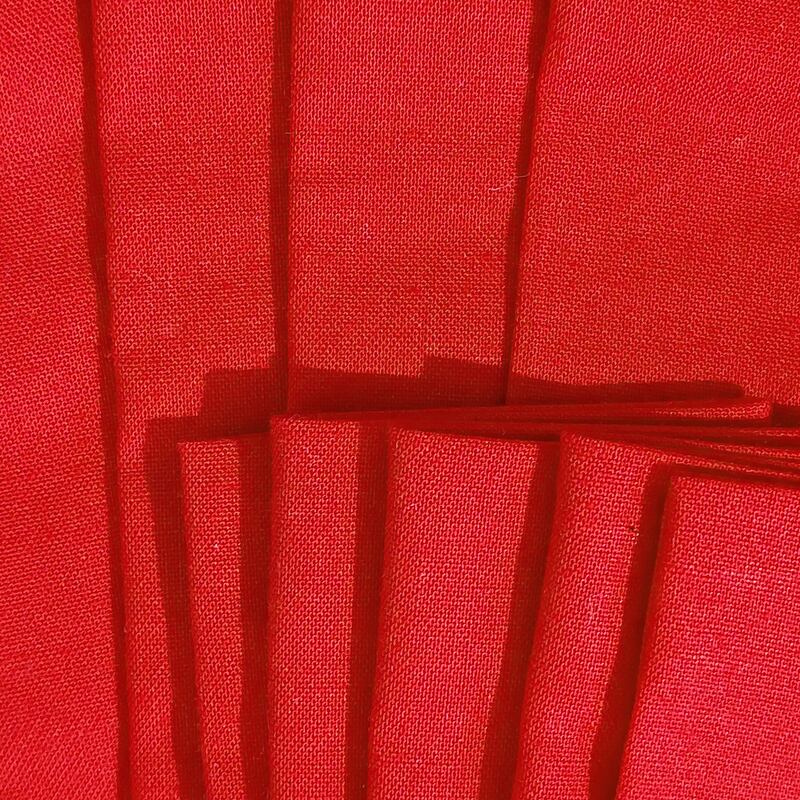Emily Waszak: The Land and Others, Including the Dead
Pallas Projects/Studios, Dublin
★★★★☆
Last December, while walking around the RDS Visual Art Awards exhibition at Imma, I entered a room that felt different from all the rest. Two heavy abstract tapestries dominated the space. Swathes of multitextured fabric, like thick animal fur, were suspended on a pair of dark frames and surrounded by a collection of ritualistic objects: totems, singing bowls, prayer mats and bundles of wooden reeds carefully arranged on the concrete floor. In an exhibition that was rife with the ebullient energy of emerging artists, Emily Waszak’s space was still, meditative, like a hushed tabernacle just off a busy thoroughfare. It was a compellingly reflective space.
Now the artist has a solo show at Pallas Projects – and, delightfully, the work doesn’t disappoint. Waszak’s The Land and Others, Including the Dead trades in and expands the artistic vocabulary that was established in her room at the RDS exhibition. Looped video works accompany the woven and sculptural arrangements, and Waszak has also introduced religious idols from different faiths into her iconographical palette. What remain consistent are the artist’s preoccupation with ritual, grief and meditative transcendence and her singular approach to textiles.


Everyone’s artistic practice is shaped by their background, but there are some artists whose works are heavily marked by the events of their life, and Waszak’s installations are intimate reflections such as these, exploring several essential facts of her biography, as well as one deeply personal trauma. During the pandemic, over the first lockdown in April 2020, the artist’s husband died due to complications from an underlying health condition. Waszak left Dublin to live in Co Donegal, where her husband’s family were from, and channelled her grief into a series of weavings. As with everything since, her work at Pallas Projects is palpably charged by the keen, almost overwhelming sadness of this loss. The objects, the tapestries, the sculptural assemblages: they all seem to invite the audience to participate in a collective project of mourning, hence Waszak’s fixation on the social and sacred functions of ceremony.



Another key influence is the artist’s Japanese heritage, from which she draws on the practice-oriented mindfulness of Japanese tea ceremonies, as well as the iconography of Japanese Buddhism. Red cloths, folded into severe angles or otherwise draped around the sculptures, predominate throughout the gallery. At first glance I took them to be aesthetic experiments in origami. After reading the curatorial text, I discovered that the artist had been inspired by a recent residency in Japan during which she encountered religious statues draped in red fabric, a practice that was part of a wider tendency to combine “hard and soft ritual object forms”.
‘There are times I regret having kids. They’re adults, and it’s now that I’m regretting it, which seems strange’
Cillian Murphy: ‘You had the Kerry babies, the moving statues, no abortion, no divorce. It was like the dark ages’
The Dublin couple who built their house in a week
John Creedon: ‘I was always being sent away, not because they didn’t love me, but because they couldn’t cope’
The artist’s sensitivity to the effects produced by offbeat combinations of materials with different tactile properties is one of the factors motivating her success. Waszak’s assemblages are alluring not only for their aesthetic and spiritual qualities but for their unprecious appropriation of wooden blocks, construction-site materials, concrete, metal, straps and synthetic fabrics, where each unlikely substance is transformed by the work’s pilgrimage of sorrow. Assemblages such as Peninsula I, which features wool, brass and ash along with nylon and bungee cord, are exemplary in this regard, challenging the boundaries between the traditional and the modern, the sacred and the banal, and the organic and the man-made.
The Land and Others, Including the Dead continues at Pallas Projects, Dublin, until Saturday, April 13th




